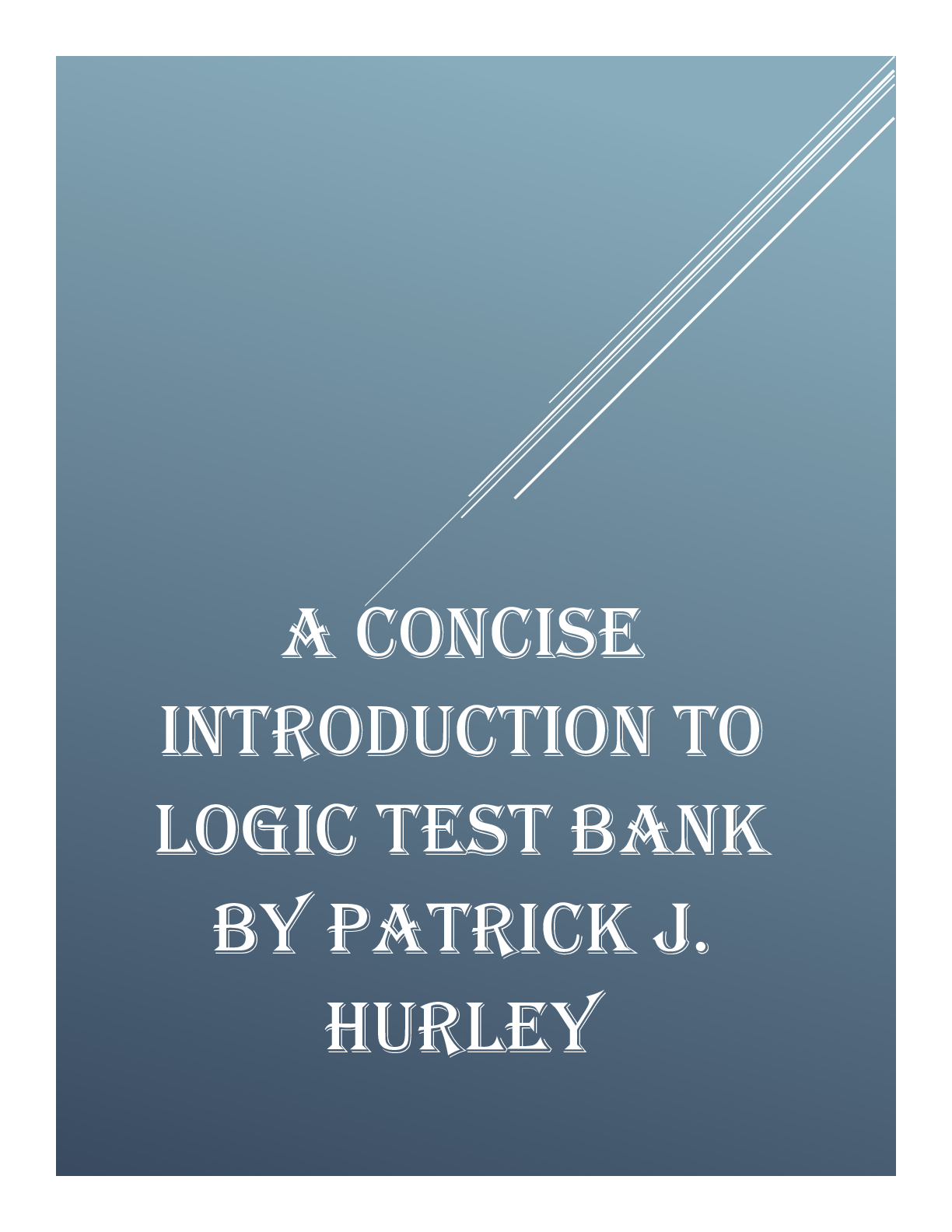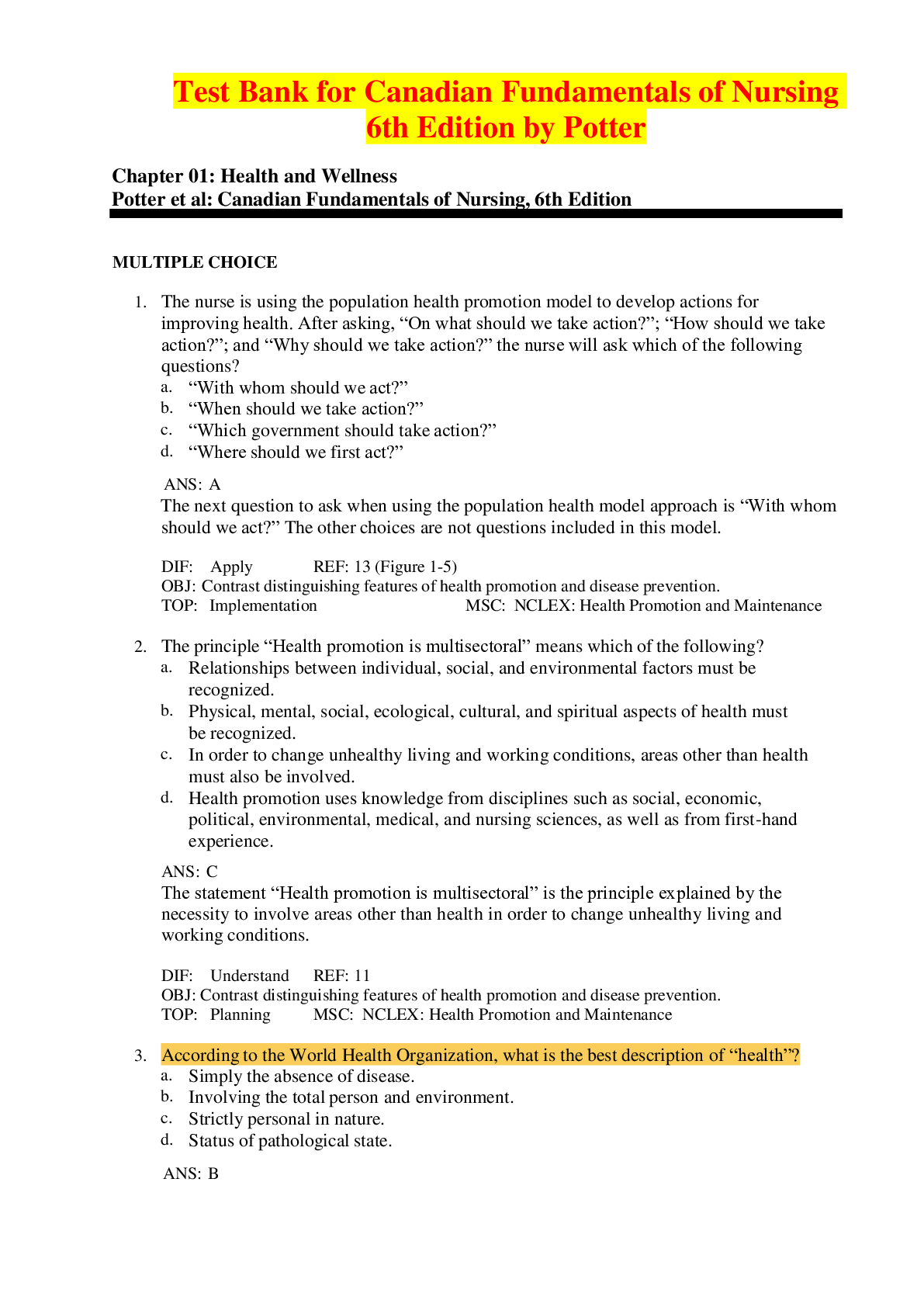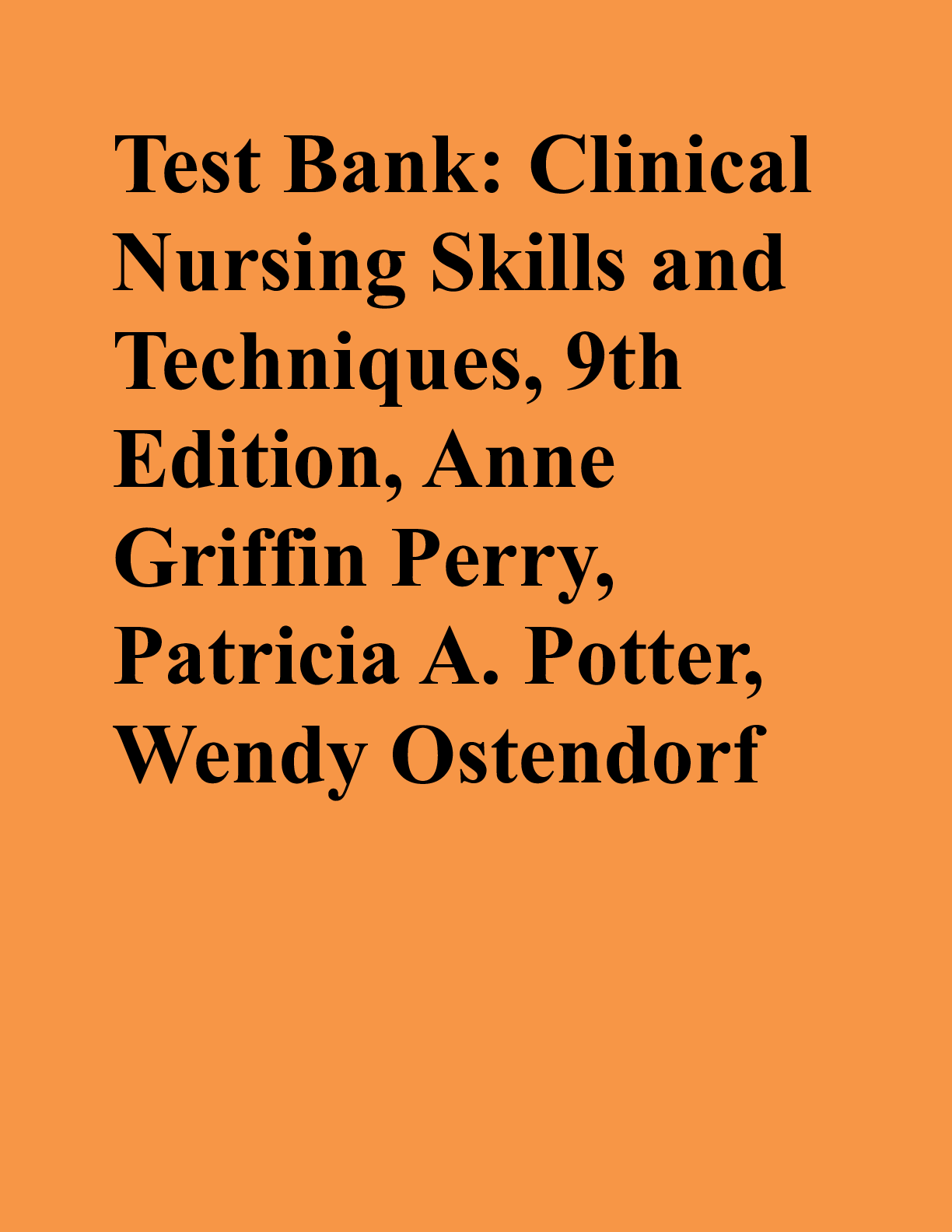*NURSING > TEST BANK > Test Bank: Fundamentals of Nursing, 9th Edition, Patricia A. Potter, Anne Griffin Perry, Patricia St (All)
Test Bank: Fundamentals of Nursing, 9th Edition, Patricia A. Potter, Anne Griffin Perry, Patricia Stockert, Amy Hall
Document Content and Description Below
Chapter 01: Maternity and Women’s Health Care Today Foundations of Maternal-Newborn & Women’s Health Nursing, 7th Edition MULTIPLE CHOICE 1. A nurse educator is teaching a group of nursing stud... ents about the history of family-centered maternity care. Which statement should the nurse include in the teaching session? a. The Sheppard-Towner Act of 1921 promoted family-centered care. b. Changes in pharmacologic management of labor prompted family-centered care. c. Demands by physicians for family involvement in childbirth increased the practice of family-centered care. d. Parental requests that infants be allowed to remain with them rather than in a nursery initiated the practice of family-centered care. ANS: D As research began to identify the benefits of early, extended parent–infant contact, parents began to insist that the infant remain with them. This gradually developed into the practice of rooming-in and finally to family-centered maternity care. The Sheppard-Towner Act provided funds for state-managed programs for mothers and children but did not promote family-centered care. The changes in pharmacologic management of labor were not a factor in family-centered maternity care. Family-centered care was a request by parents, not physicians. DIF: Cognitive Level: Application OBJ: Nursing Process Step: Planning MSC: Patient Needs: Health Promotion and Maintenance 2. Expectant parents ask a prenatal nurse educator, ―Which setting for childbirth limits the amount of parent–infant interaction?‖ Which answer should the nurse provide for these parents in order to assist them in choosing an appropriate birth setting? a. Birth center b. Home birth c. Traditional hospital birth d. Labor, birth, and recovery room ANS: C In the traditional hospital setting, the mother may see the infant for only short feeding periods, and the infant is cared for in a separate nursery. Birth centers are set up to allow an increase in parent–infant contact. Home births allow the greatest amount of parent–infant contact. The labor, birth, recovery, and postpartum room setting allows for increased parent–infant contact. DIF: Cognitive Level: Understanding OBJ: Nursing Process Step: Planning MSC: Patient Needs: Health Promotion and Maintenance 3. W [Show More]
Last updated: 4 years ago
Preview 1 out of 10 pages

Buy this document to get the full access instantly
Instant Download Access after purchase
Buy NowInstant download
We Accept:

Reviews( 0 )
$8.00
Can't find what you want? Try our AI powered Search
Document information
Connected school, study & course
About the document
Uploaded On
May 18, 2021
Number of pages
10
Written in
Additional information
This document has been written for:
Uploaded
May 18, 2021
Downloads
0
Views
16


.png)







.png)






.png)







